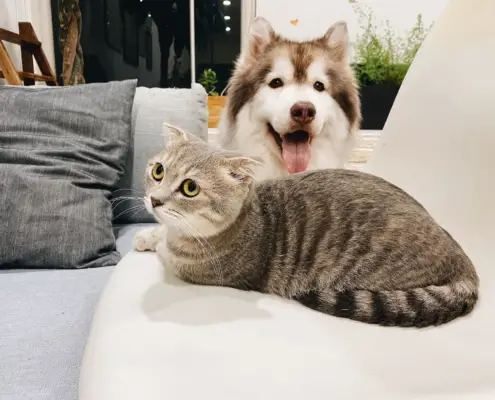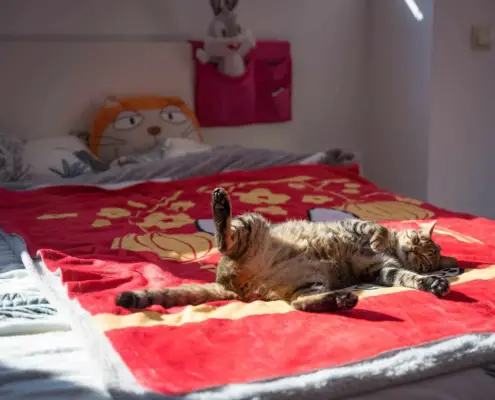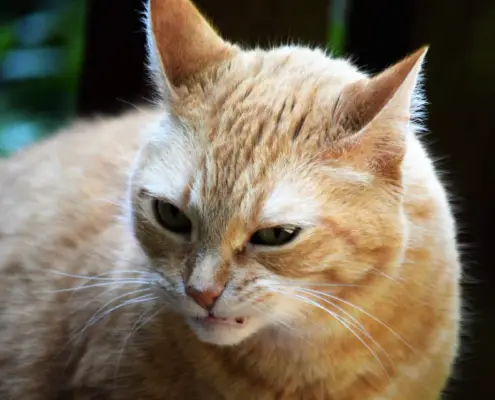
Cats have long been known for their independent nature, but anyone who has owned a cat knows that they can also form strong bonds with their human companions. These bonds are often characterized by a deep sense of attachment and affection. But do cats display possessive behavior towards their owners? In this article, we will explore the concept of possessive behavior in cats and delve into the factors that contribute to it.
The concept of possessive behavior in cats
Possessive behavior in cats refers to their tendency to guard or protect their resources, including their human owners. While it is true that cats are territorial animals by nature, possessive behavior goes beyond simply marking their territory. It involves behaviors such as hissing, growling, or even physically blocking access to their owners.
Signs of possessive behavior in cats
There are several signs that may indicate possessive behavior in cats. One common sign is excessive following or “velcro” behavior, where the cat constantly stays close to their owner and becomes anxious when separated. Cats may also exhibit aggression towards other pets or family members who they perceive as a threat to their relationship with their owner. Additionally, possessive cats may become territorial over their owner’s belongings, such as beds or furniture, and display aggression if others approach these items.
Factors that contribute to possessive behavior in cats
Understanding the factors that contribute to possessive behavior in cats is essential in addressing and managing this behavior. One important factor is the cat’s history and early socialization experiences. Cats that were not properly socialized as kittens may develop possessive behavior as a result of feeling insecure or threatened. Additionally, changes in the cat’s environment, such as moving to a new home or the addition of a new pet, can trigger possessive behavior. Lastly, certain breeds of cats, such as Siamese or Burmese, may be more prone to possessive behavior due to their genetic predispositions.
Understanding the bond between cats and their owners
To truly understand possessive behavior in cats, it is important to explore the bond between cats and their owners. Cats form strong attachments to their owners, often viewing them as a source of security and comfort. This bond is built on trust and mutual affection. Cats rely on their owners for food, shelter, and attention, and in return, they provide companionship and emotional support. It is this deep bond that can sometimes manifest as possessive behavior.
How cats express their attachment to their owners
Cats express their attachment to their owners in various ways. One common behavior is rubbing against their owner’s legs or furniture, which is a form of scent marking and a way for cats to claim their territory. Cats may also knead their paws on their owner’s lap or on soft surfaces, a behavior that is reminiscent of their kittenhood when they would knead their mother’s belly for milk. Another way cats express their attachment is through vocalizations, such as purring or meowing, which are often directed towards their owners as a means of communication and seeking attention.
The role of socialization in reducing possessive behavior in cats
Proper socialization plays a crucial role in reducing possessive behavior in cats. It is important to expose kittens to a variety of people, animals, and environments during their early development stages. This helps them become accustomed to different situations and reduces the likelihood of developing possessive behavior later in life. Regular positive interactions with other pets and family members can also help cats feel more secure and less inclined to exhibit possessive behavior.
Tips for managing possessive behavior in cats
If your cat displays possessive behavior, there are several strategies you can employ to manage and reduce this behavior. First and foremost, it is important to create a safe and secure environment for your cat. This includes providing separate spaces for each pet in the household, as well as ensuring that each pet has their own resources, such as food bowls and litter boxes. Additionally, engaging in regular play and interactive sessions with your cat can help redirect their possessive tendencies towards more positive behaviors. It is also important to seek professional guidance from a veterinarian or animal behaviorist if the possessive behavior becomes aggressive or unmanageable.
Common myths about possessive behavior in cats
There are several myths surrounding possessive behavior in cats that need to be debunked. One common myth is that possessive behavior is a sign of love or devotion. While possessive cats may indeed feel strongly attached to their owners, possessive behavior is not a healthy expression of love. Another myth is that possessive behavior is only exhibited by female cats. In reality, both male and female cats can exhibit possessive behavior, although it may manifest in different ways. Lastly, some people believe that possessive behavior in cats cannot be changed or managed. While possessive behavior can be challenging to address, with proper understanding and training, it is possible to modify this behavior and build a healthier bond with your cat.
Nurturing a healthy bond with your cat
In conclusion, cats can indeed display possessive behavior towards their owners. This behavior is often a result of their deep attachment and reliance on their human companions. By understanding the factors that contribute to possessive behavior and implementing proper socialization techniques, owners can manage and reduce possessive tendencies in their cats. Nurturing a healthy bond with your cat involves creating a secure environment, engaging in positive interactions, and seeking professional guidance when needed. By doing so, you can foster a strong and balanced relationship with your feline friend, built on trust, love, and mutual respect.
If you enjoyed my article, I would appreciate you sharing it with your network.

Sima Ndlebe
Sima writes for CatBuzz. He is interested in Cats, Health and Fitness, and Entrepreneurship.
Published: 5 December 2023



